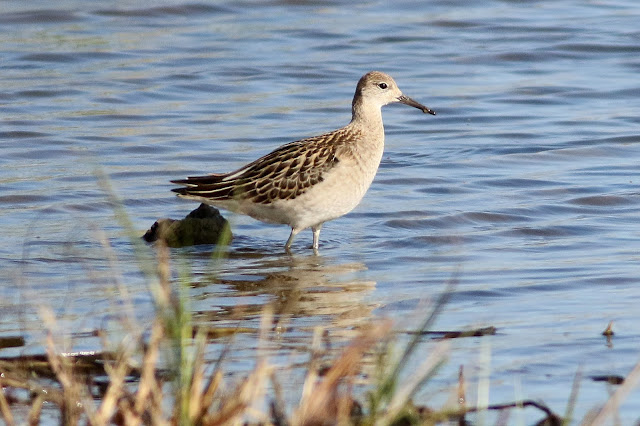22nd October 2020
Another visit to Oare Marshes this time for the American Golden Plover which, just to makes things more difficult, has been associating with the several hundred Golden Plover present. However, when photographing the East Flood from the road, Oare Marshes is definitely an afternoon site as the sun doesn't cross the road until 1330 hrs BST. So time for a visit to Harty Marshes on the way.
A bit early in the season for raptors so very quiet, but just as we were leaving a female-type Marsh Harrier wafted towards us allowing a few shots.
At Oare Marshes the sun was still the wrong side of the road so time to have a look at the slipway and the River Swale. As is usually the case Turnstones were feeding at the end of the slipway, and a single Dunlin along the edge.
Today out on the mud were a few Grey Plovers, the first I have ever seen here. However, I suspect they are common winter visitors here and we are probably here a bit later in the year than usual.
There was a decent flock of Avocets feeding along the water's edge on an incoming tide and eventually decided that it was time to have a break from feeding and fly on to East Flood for the high tide roost.
There were also good numbers of Black-tailed Godwits feeding on the mud.
How about this for in-flight re-fuelling?
On the East Flood the sun had now gone round and due to the incoming tide numbers of waders were beginning to build up like these Lapwings and a few Ringed Plovers.
There were a few Ruff present but only one came close enough for a few shots.
So where was the American Golden Plover? Well, it was somewhere amongst the flocks of several hundred Golden Plover and was just a matter of sifting through them until you found it.
It was actually a fairly distinctive bird, but obviously a lot easier when it was on one of the closer spits. It could be separated from all the other Goldies by a darker cap which accentuated a conspicuous white eye-stripe. It was also noticeably smaller the its European counterparts, but this was only a differentiator when they were side-by-side.





























































No comments:
Post a Comment
Note: only a member of this blog may post a comment.